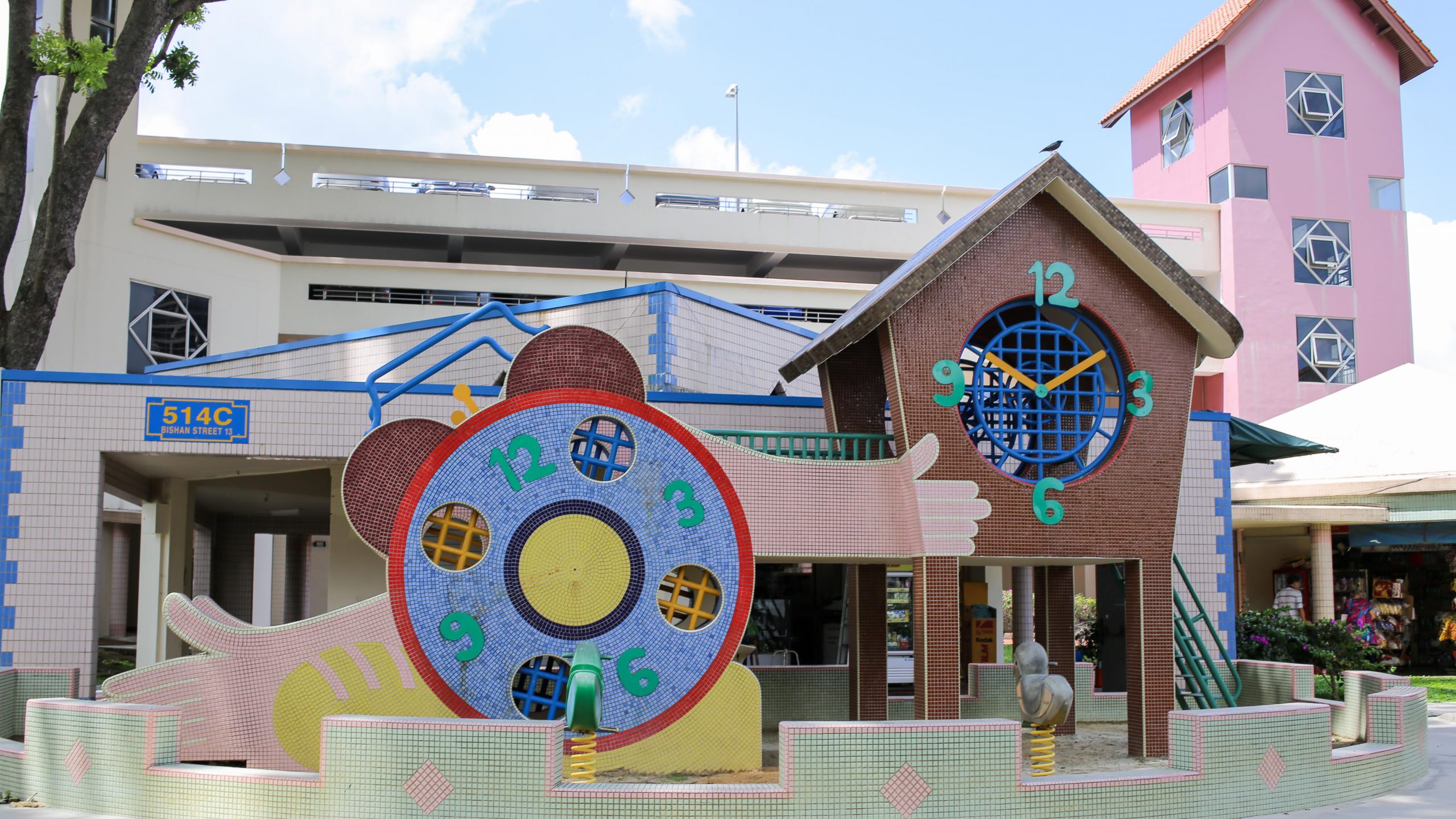Beyond child’s play: heritage as process in Singapore’s playgrounds
April 6, 2023

On 6 April 2018, the Dragon playground at Toa Payoh was featured during the 15th edition of the Singapore Heritage Festival. In ‘Beyond child’s play: heritage as process in Singapore’s playgrounds’ (International Journal of Heritage Studies, 2020), Associate Professor Chang Tou Chuang (NUS Department of Geography) and Mr Osten Mah Bang Ping (University of Cambridge Department of Land Economy) write about heritage as a process that involves the interpretation and management of heritage sites, using mosaic playgrounds in Singapore as a case study. Beyond high profile sites and monuments, A/P Chang and Dr Mah use an ‘everyday geographies’ approach to understand heritage and explore how the processes of change affect it.
In Singapore, heritage management is often viewed as compromising on ‘authenticity’, with the strategy of adaptive reuse popularly seen to detract from the true spirit of the place and the overall integrity of the environment.
Playgrounds do not have formal heritage statuses in Singapore – they are neither gazetted as national monuments nor designated as conserved built structures. However, the ‘mosaic playground’ received informal heritage recognition from the National Heritage Board (NHB), from its listing in the heritage trail booklets designed for the Housing Development Board (HDB) towns, and their citations as examples of community heritage in Our SG Heritage Plan.
The interpretation of heritage involves the selection of places and activities as heritage, as well as the justification for their selection. A survey conducted by A/P Chang and Mr Mah revealed that 81% of everyday users agree that the playgrounds of Singapore’s HDB estates should be designated as ‘national heritage’. However, a vocal minority of 19 users disagree, citing their lack of personal childhood memories of them or that playgrounds inadequately in embody Singapore’s heritage.
Heritage is something that one has grown up with – a playground as a beloved site of a childhood memory or a historic landmark in one’s neighbourhood. While few would disagree that the Dragon at Toa Payoh and Ang Mo Kio or the Dove at Dakota are national icons, the same cannot be said of the other playgrounds which have not enjoyed as much recognition or publicity. While the Dragon playgrounds have undergone a ‘process of becoming’ national landmarks, appearing in heritage-themed magazines, blogs, and National Day celebrations, other playgrounds have not.
The authors also note that the conservation of playgrounds also comes with significant trade-offs. In land-scarce Singapore, the retention of heritage sites entails less land for future development. Heritage conservation thus goes against ‘maximisation of economic return from the land use’, a hallmark of Singapore’s planning agenda.
The incorporation of fitness corners into playgrounds represents another change initiated by the HDB. The installation of exercise equipment is meant to promote intergenerational bonding as a broader age group will be attracted. With Singapore’s ageing population, it is also hoped that adults will be encouraged to exercise even as they keep an eye on their children and grandchildren in the playground. Thus, the change enhances the meaning of playgrounds as community spaces, providing opportunities to foster new memories.
Read the article here.
